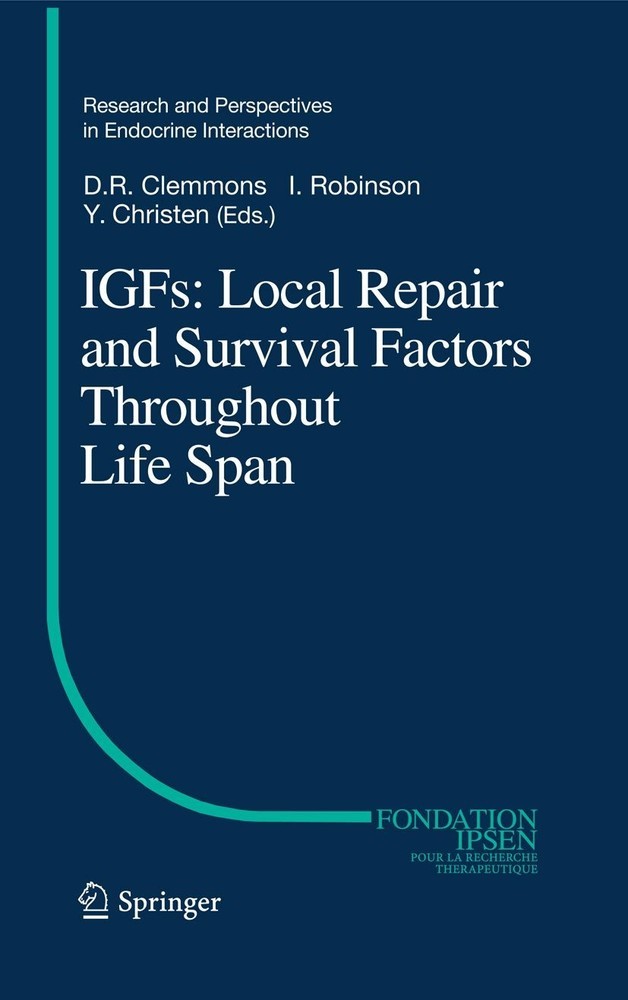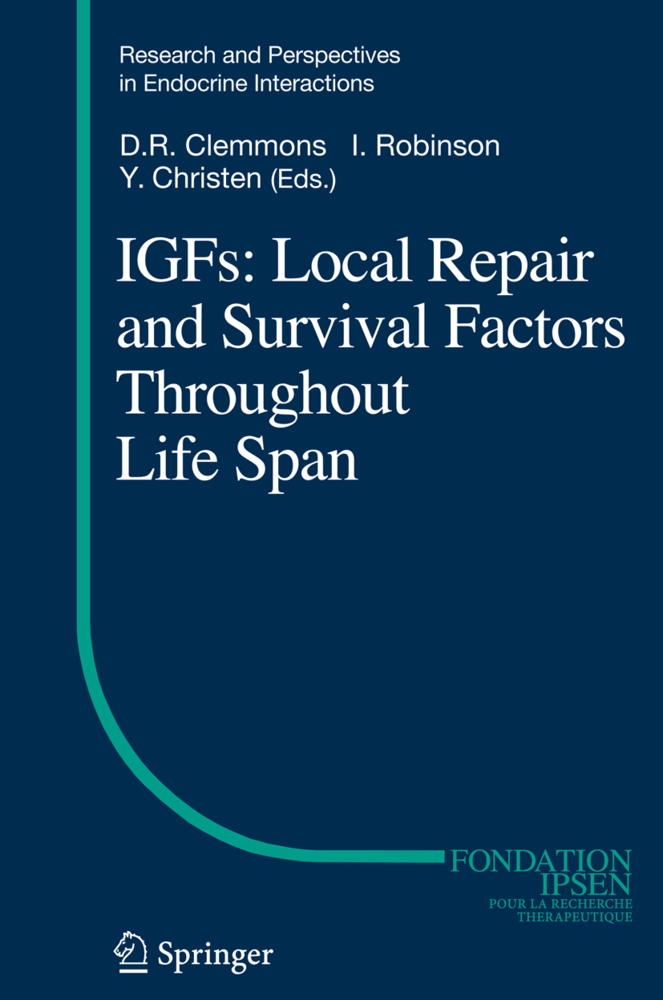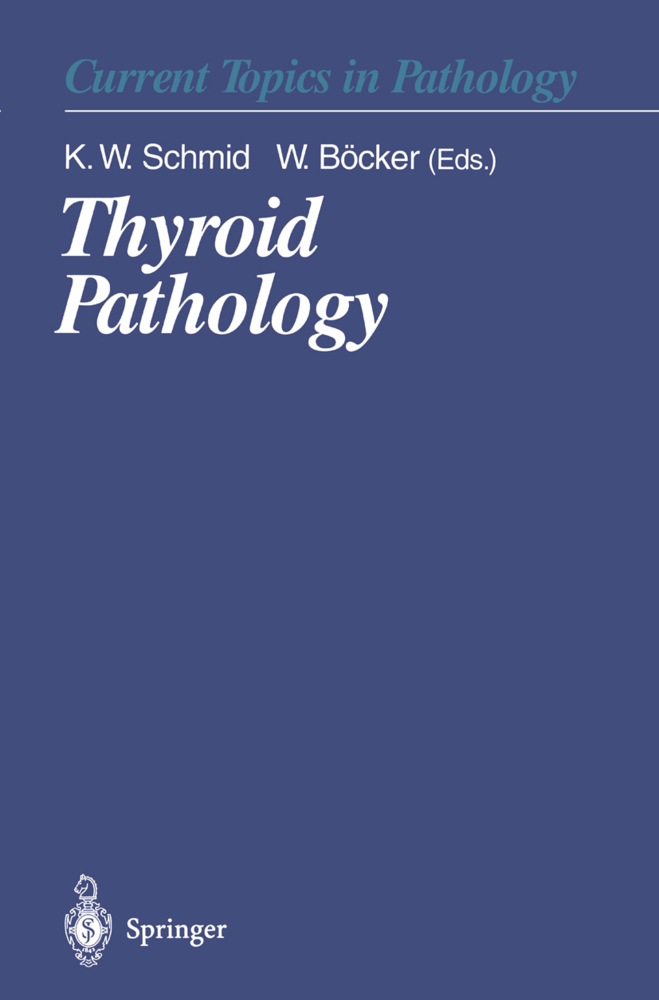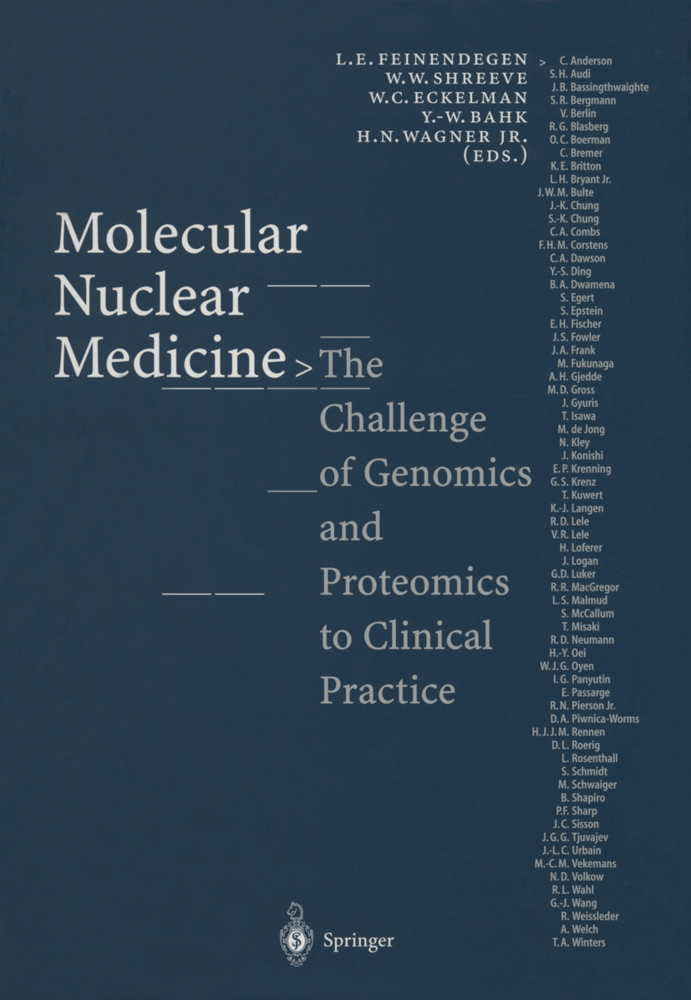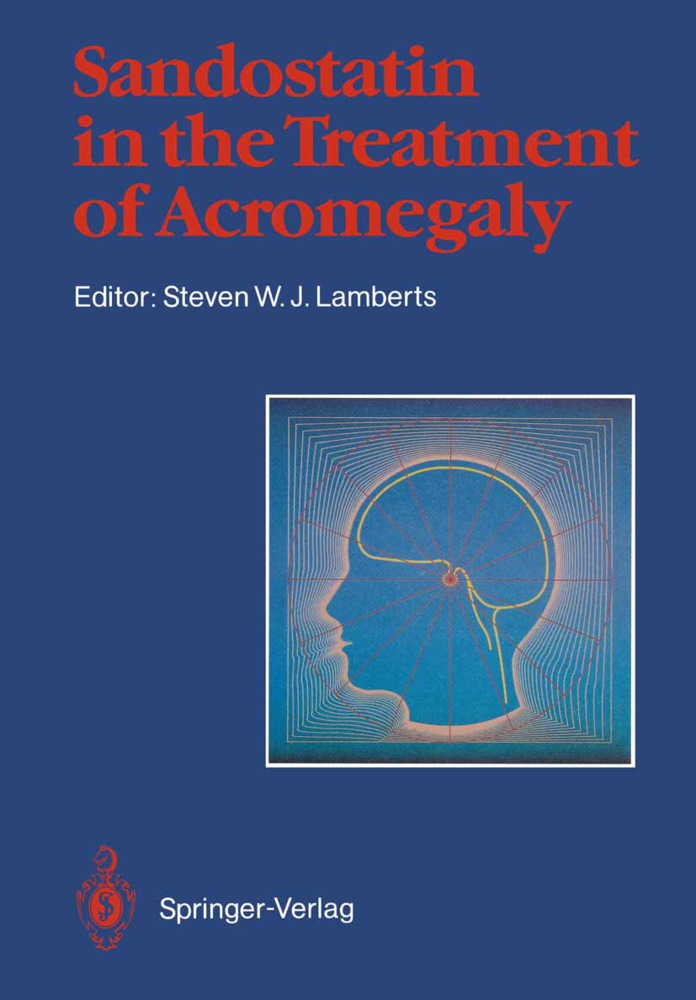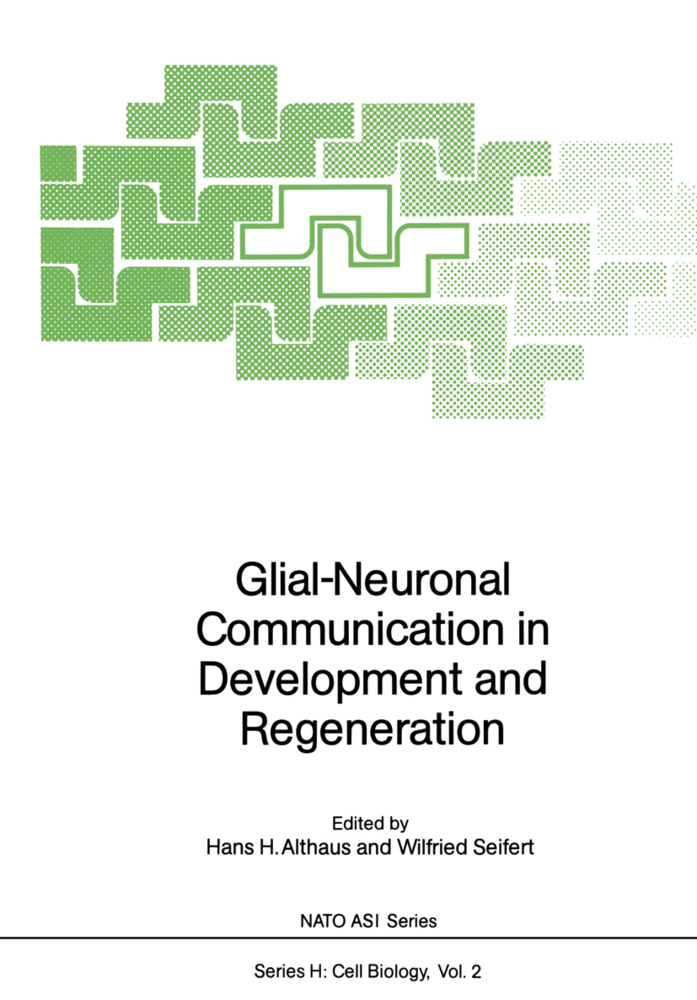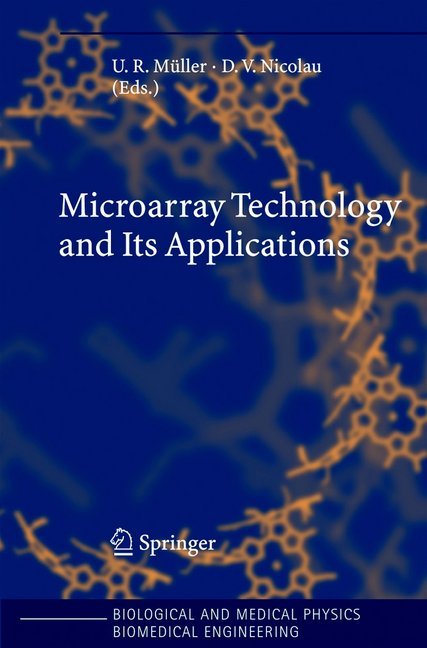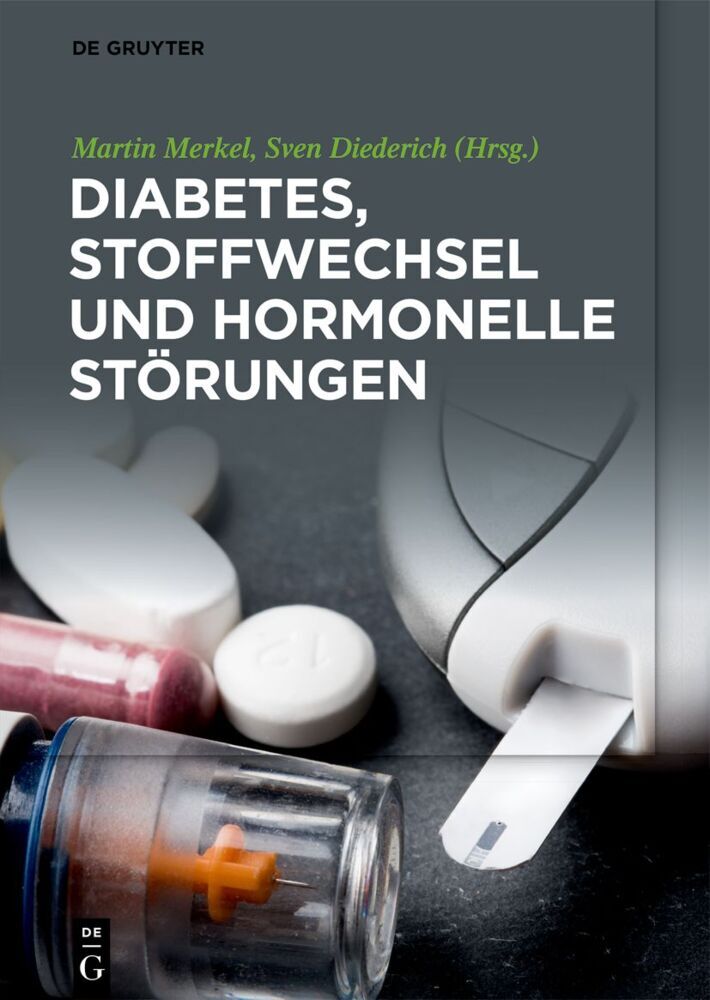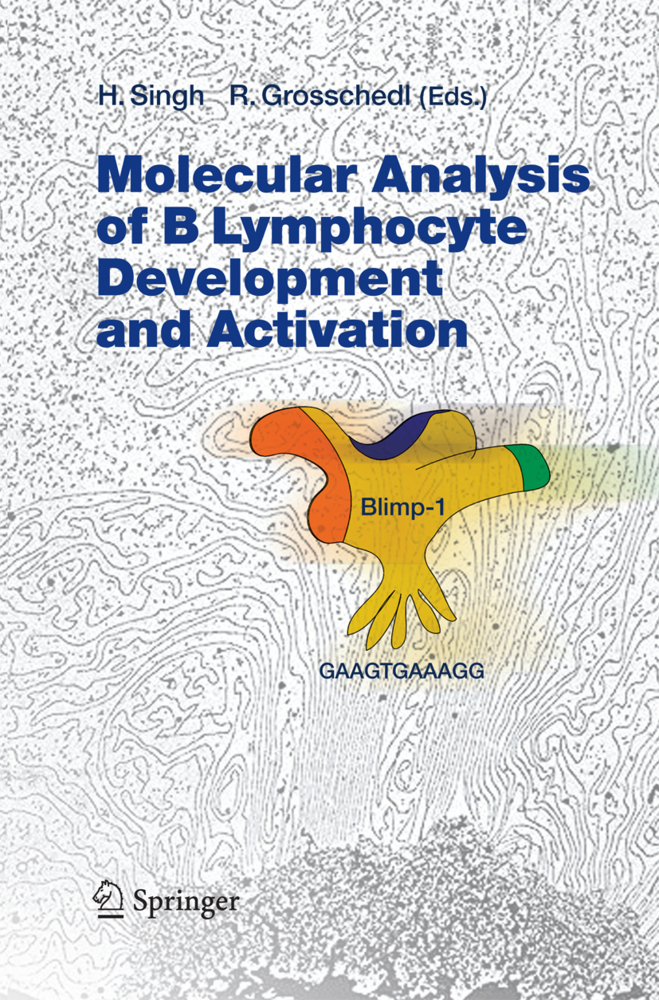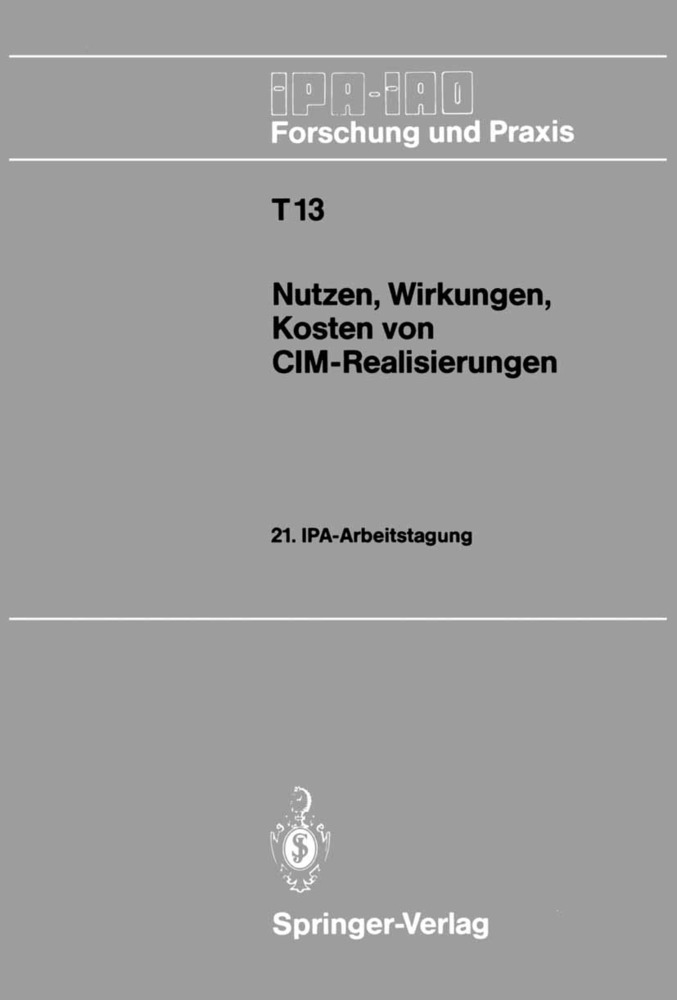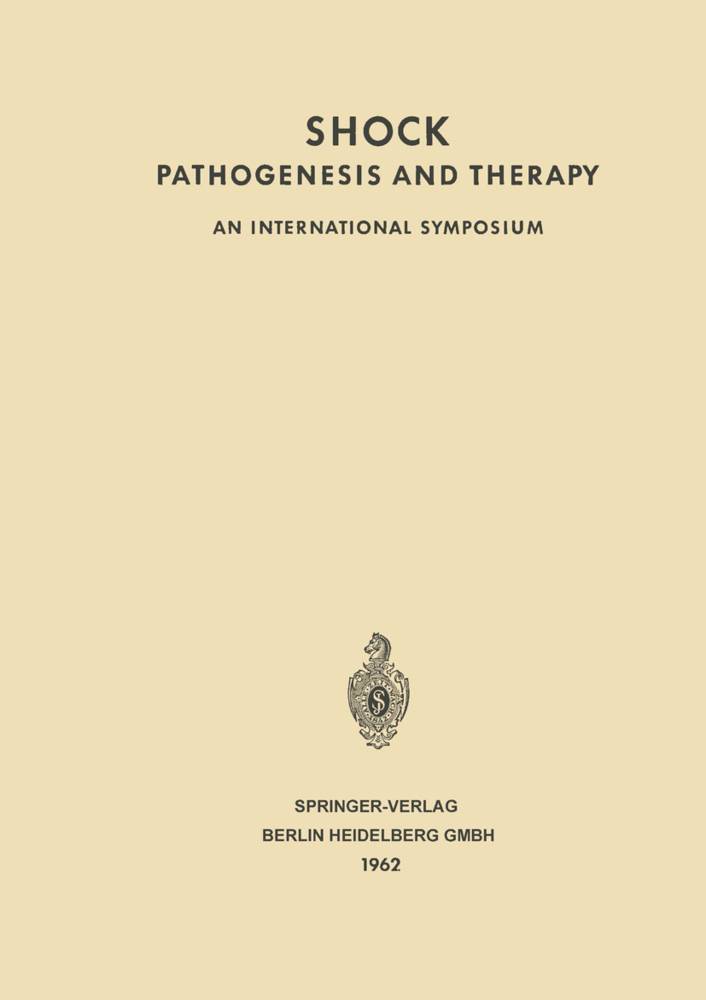IGFs:Local Repair and Survival Factors Throughout Life Span
Insulin-like growth factors (IGFs), their binding proteins and their receptors play important roles in regulating growth, metabolism, proliferation and survival for many cells and tissues throughout lifespan in humans and other species. Circulating IGF1 is known to be an endocrine regulator, with metabolic effects related to, and partly convergent with, insulin signalling. IGF1 also mediates many of the growth promoting effects of GH, and there is an ongoing debate as to the relative contributions of endocrine-, vs locally-derived IGF1 for systemic growth. More recently however, it has become clear that IGFs may be key local growth and cellular survival factors for many different tissues, active from early in embryonic development, essential for normal maturation and growth during foetal life. IGFs continue to play important roles throughout adult life in many diverse processes such as tissue repair, cellular proliferation, tissue remodelling and metabolic regulation. IGF systems are tightly regulated; orderly control of cellular repair and metabolism is central to healthy ageing, whilst uncontrolled proliferation can lead to cancer.
1;Foreword;5 2;Acknowlegements;6 3;Contents;7 4;Contributors;9 5;GH & IGF1: Aspects of Global and Local Release and Actions;12 5.1;1 Introductory Remarks;12 5.2;2 IGF1: Global and Local Growth Factor;13 5.3;3 Access all Areas?;16 5.4;References;19 6;Hyperglycemia Regulates the Sensitivity of Vascular Cells to IGF- I Stimulation;22 6.1;1 Introduction;23 6.2;2 Role of Ligand Occupancy of aVb3 in Stimulating the Response to IGF- I;25 6.3;3 Augmentation of PI-3 Kinase Activation;26 6.4;4 Role of Hyperglycemia in Modulating aVb3/IGF-I Receptor- linked Signaling;27 6.5;5 In Vivo Validation that Cooperative Signaling Between aVb3 Integrin and the IGF- I Receptor Acceretes Atherosclerosis in Diabetes;28 6.6;References;29 7;IGFBP2 Supports ex vivo Expansion of Hematopoietic Stem Cells;32 7.1;1 Introduction;33 7.2;2 Materials and Methods;33 7.3;3 Culture Medium;34 7.4;4 Mouse HSC Culture;34 7.5;5 Human Cell Culture;34 7.6;6 Flow Cytometry;37 7.7;7 Competitive Reconstitution Analysis;38 7.8;8 NOD/SCID Transplant;41 7.9;9 Mass Spectrometry;41 7.10;10 Quantitative RT-PCR;44 7.11;11 Results ;44 7.12;12 A Cocktail Including IGFBP2 Supports an Approximately 48- fold Increase in Numbers of Repopulating Mouse HSCs;46 7.13;13 IGFBP2 Stimulates Ex Vivo Expansion of Cultured Human Cord Blood CD133+ Cells;46 7.14;14 IGFBP2 and Angptl5 Together Stimulate Extensive Ex Vivo Expansion of SRCs of Cultured Human Cord Blood CD133+ Cells;47 7.15;15 IGFBP2 Upregulates HoxB Gene Expression;49 7.16;16 Discussion;49 7.17;References;50 8;The Role of Insulin-like Growth Factor-I in Central Nervous System Development;53 8.1;1 Introduction;53 8.2;2 Overview of IGF-I Effects on Brain Growth;54 8.3;3 Neural Stem and Progenitor Cells;56 8.4;4 Neurogenesis;58 8.5;5 Glia Development;60 8.6;6 Conclusions;63 8.7;References;64 9;Stimulation of Proliferative Pathways by IGF- binding Proteins;69 9.1;1 Introduction : The Insulin-like Growth Factors and Their Binding Proteins;70 9.2;2 Growth Inhibition by IGFBP-3;71 9.3;3 Growth Stimulation by IGFBP-3;71 9.4;4 Investigations into the Mechanism of Growth Stimulation by IGFBP- 3;72 9.5;5 Conclusion and Therapeutic Implications;75 9.6;References;76 10;Signaling Pathways that Regulate C. elegans Life Span;79 10.1;1 Gene Activities that Mediate Increased Life Span of C. Elegans Insulin- like Signaling Mutants;81 10.2;2 Life Span Regulation by Evolutionarily Conserved Genes Essential for Viability;84 10.3;3 Stress Response Systems Activated in Long-lived C. elegans;87 10.4;4 The Cherry-picked Longevity RNAi Library;88 10.5;5 Identification of C. elegans Genes Regulating Longevity using Enhanced RNAi- sensitive Strains;89 10.6;References;89 11;IGF-1 Regulation of Skeletal Muscle Hypertrophy and Atrophy;95 11.1;1 Protein Synthesis Pathways Downstream of IGF-1;96 11.2;2 Hypertrophy Mediators Downstream of PI3K and Akt: the Akt/ TORC1/ p70S6K and Akt/ GSK3 Pathways;96 11.3;3 A Second Hypertrophy Mediator downstream of PI3K and Akt: GSK3b;98 11.4;4 Skeletal Muscle Atrophy Occurs via Induction of Distinct E3 Ubiquitin Ligases, Whose Expression can be Inhibited by IGF- 1;99 11.5;5 IGF-1/PI3K/Akt Inhibition of FOXO Transcription Factors Blocks Upregulation of MuRF1 and MAFbx;100 11.6;6 IGF-1 Regulation of Myostatin;101 11.7;7 Conclusion;102 11.8;References;102 12;Growth Hormone, Insulin-like Growth Factor I and Insulin: their Relationship to Aging and Cancer;107 12.1;1 Introduction;107 12.2;2 GH/IGF-I/insulin axis in the aging process;108 12.3;3 Lessons from dwarf mice;109 12.4;4 Insulin receptor and insulin receptor substrates and life span;110 12.5;5 The role of GH/IGF/insulin axis in cancer promotion;110 12.6;6 Insulin receptor (IR) and insulin receptor substrates (IRS) and cancer;111 12.7;7 The importance of calorie restriction in aging and cancer;111 12.8;8 Summary and Conclusions;112 12.9;References;112 13;The Functions of Insulin-like Peptides in Insects;115 13.1;1 Introduction;116 13.2;2 The ILPs of Drosophila;118 13.3;3 ILPs in Ot
Clemmons, David
Robinson, Iain C.A.F.
Christen, Yves
| ISBN | 9783642043024 |
|---|---|
| Artikelnummer | 9783642043024 |
| Medientyp | E-Book - PDF |
| Auflage | 2. Aufl. |
| Copyrightjahr | 2009 |
| Verlag | Springer-Verlag |
| Umfang | 157 Seiten |
| Sprache | Englisch |
| Kopierschutz | Digitales Wasserzeichen |

